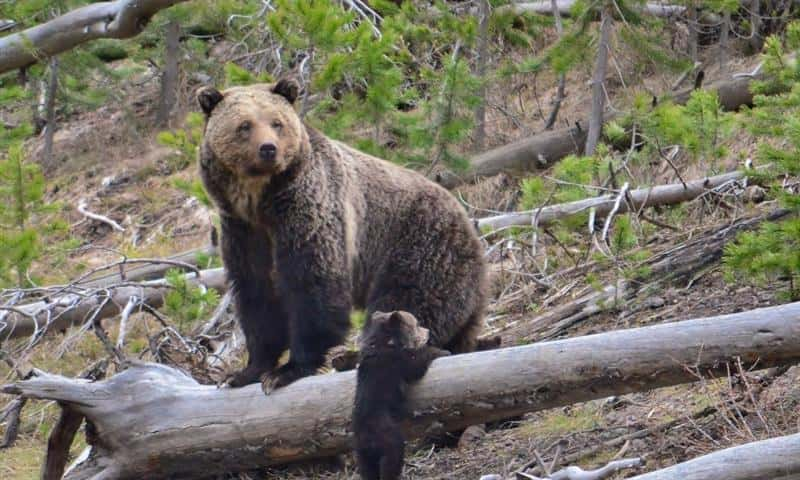Legislation to remove the grizzly bear from the Endangered Species List in the Greater Yellowstone and Northern Continental Divide Ecosystems, took a big step forward last week.
The House Committee on Natural Resources passed Congressman Matt Rosendale’s (MT-02) legislation to delist the grizzly bear in the Northern Continental Divide Ecosystem. In the same committee meeting legislation sponsored by Wyoming Congresswoman Harriet Hageman would remove the Greater Yellowstone Ecosystem grizzly from the list.
The Greater Yellowstone population was delisted twice before, in 2007 and 2017. Each time, the delisting was blocked by activist courts.
Representative Hageman stated, “I am thankful to my colleagues on the Natural Resources Committee for their support for the delisting of the Greater Yellowstone population of grizzly bears. The grizzly bear has been listed as threatened (but not endangered) since 1975, and its original recovery goal was 500 bears. Today, we have nearly 1100 bears in this ecosystem. The population of bears has become so great that they now pose a serious and deadly threat to people and livestock in Wyoming.
“The goal of the Endangered Species Act (ESA) for the Greater Yellowstone Grizzly has clearly been met and we should rightly return species management back to the State of Wyoming. We cannot continue to allow activist courts or agency bureaucrats to block sound species management.
“I appreciate the support of my House co-sponsors, Rep. Ryan Zinke, who actually DID attempt to delist the grizzly bear during his service as Secretary of the Interior, and Rep. Matt Rosendale. I look forward to seeing this legislation passed in the House of Representatives and taken up by the Senate – where Senator Lummis has already introduced a companion bill.”
Speaking of his bill, Represenative Rosendale said, “Since grizzly bears were first listed under the Endangered Species Act, they have exceeded the set recovery targets – now, there are over 1,100 grizzly bears in the Northern Continental Divide Ecosystem alone,” Rep. Rosendale said. “I’m grateful that my colleagues on the House Natural Resources Committee recognize that the federal government must allow Montana to manage our grizzly bear population.”
The grizzly bears that are protected in the Northern Continental Divide Ecosystem (NCDE) make up the largest population of grizzly bears in the continental United States.
Both bills received a committee hearing on March 23rd, 2023, in which Choteau rancher Karli Johnson shared her experience raising children and cattle around a growing and increasingly aggressive grizzly bear population. Wyoming Game and Fish Director Brian Nesvik also testified on his experience of managing the ever expanding population of grizzly bears. Read more here.
###
Reps. Rosendale & Hageman



I’m sorry but scientific and government data confirms that grizzly bears have a negligible effect on U.S. cattle and sheep industries (https://www.humanesociety.org/sites/default/files/docs/HSUS-Grizzly-Livestock_6.Mar_.19Final.pdf), so this whole ‘activist court’ nonsense you mention is absurd. Your argument is shamelessly politically motivated with no scientific backing, all so you can further degrade public lands with overgrazing. Money talks I guess but don’t try and convince people that your corruption and poisonous politics is actually good science because it’s not.
They should absolutely be delisted. If you’ve spent anytime in the woods of Wyoming or Montana, you’ve no doubt had encounters with grizzly bears, in fact, there are multiple attacks on people every year. A limited hunt to keep their numbers in check is the right answer, despite what these extreme minded lunatics claim.